当前位置:网站首页>[learning notes] numerical differentiation of back error propagation
[learning notes] numerical differentiation of back error propagation
2022-07-02 07:52:00 【Silent clouds】
The so-called numerical differentiation , In fact, to put it bluntly, it's derivative , Derivation includes direct derivation and partial derivation , What is used in neural networks is generally to find partial derivatives , Thus, the error of each weight is obtained .
Prepare to use this time Python To study a wave of numerical differentiation .
Direct derivation
Specific derivation formula , After learning advanced mathematics, you should know that there is a person named “ Forward differential ” Of course , His formula looks like this :
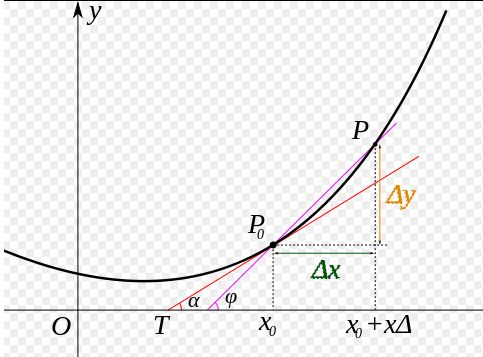
However, in Python In fact, it is not easy to realize , Because in this definition , The smaller the step of forward difference, the better , But in Pyhton The middle decimal point will not be kept so much . So when it is small to a certain extent, it becomes 0.
So in general “ Central difference ”, Namely x Add a step forward , Subtract one step backward , So it became :
The result is the same as that above , Now we can use it Python Knock a wave of code implementation to see .
# Derivative function
# Forward differential
def forward_diff(f,x,h=1e-4):
return (f(x+h)-f(x))/h
# Central difference
def diff(f,x,h=1e-4):
return (f(x+h)-f(x-h))/(2*h)
# Define a function :y=x^2
def fun(x):
return x**2
x = np.arange(0,4,0.01)
f = fun(x)
# Function in (2,4) Countdown at
dy = diff(fun,2)
plt.plot(x,f)
# Use the formula of a straight line to draw the tangent
plt.plot(x,dy*(x-2)+4)
plt.xlabel('x')
plt.ylabel('y')
plt.show()
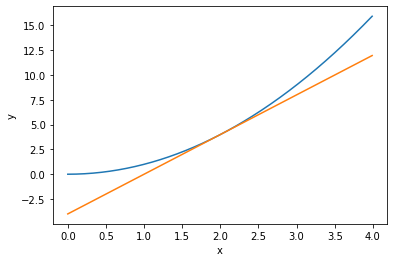
Partial derivative and gradient
It's just an appetizer , The following is the main topic , That is to find partial derivatives of functions . This gradient is also a concept we came into contact with when learning how to calculate partial derivatives of functions .
If you still have an impression , We know that the partial derivative is a function , Let's say the following :
There are two independent variables in this formula , So the derivation formula above is not easy to use . Because that formula only applies to the case of one independent variable . But it's not completely useless , That's it , When deriving from an independent variable , Just treat the other as a constant . This is what we did when we were studying advanced mathematics Finding partial derivatives . and gradient Is the vector formed by the partial derivative , The form of expression is as follows :
So the gradient is a vector , He points to the lowest point of the function , That's the minimum . The above function has three variables , So there are three axes . Therefore, the displayed image is a three-dimensional image . So we can imagine , There is a concave piece on the ground , Then the gradient points to the lowest point of the concave .
After studying geography, you know the concept of contour , So the above graph changes into contour lines, which is how , The gradient is the lowest point pointing to the center . It's like playing with glass beads when we were young , Close to the middle hole , The glass bead will naturally slide to the lowest point of the hole .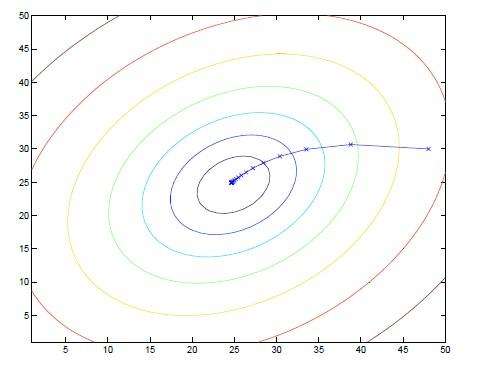
The old rules below , Or use it Python Look at the code .
def gradient(f,x,h=1e-4):
# Gradient calculation
grad = np.zeros_like(x)
for idx in range(x.size):
tmp_val = x[idx]
x[idx] = tmp_val + h
fxh1 = f(x)
x[idx] = tmp_val - h
fxh2 = f(x)
grad[idx] = (fxh1-fxh2)/(2*h)
x[idx] = tmp_val
return grad
Don't rush here , Let's learn another classic algorithm in machine learning , That is the gradient descent method , Then we'll see the effect .
Gradient descent method
Speaking of gradient descent method, this is classic , Although not the best algorithm , But it is the most practical , It's the easiest , His existence is to find a person called “ Global optimal solution ” Things that are . Nothing goes against my will , In fact, many times he will be trapped in “ Locally optimal solution ” The place of . Or we play with glass beads , When the glass bead rolls to the hole on the ground , As a result, there was a small hole on the way , So the glass beads can't be drawn in and out under the influence of gravity , In the end, it doesn't reach the hole you want .
This time is actually because no matter what the hole is , At the lowest end, the gradient is 0, When the gradient is 0 When , It is assumed by default that it is the place where the optimal solution is reached .
So the specific algorithm is actually very simple . First, we have an initialization coordinate , That is, the location of the original glass beads , Then we find the gradient value , Get a vector pointing to the lowest point of the ground . Then the glass beads can roll over ( This is definitely not a curse ). But when you roll over , It's definitely impossible to roll over at one time , He has a “ step ”. It's like we walk , Going to the destination must be step by step , You can't fly directly , One step in place . So we also set up a system called “ Learning rate ” Things that are . Therefore, you can get the updated value of a calculation .
Here is the exciting code moment , We use it Python Draw a picture , And record the coordinates of each update , And show it .
# Minimum gradient function
def grad_desc(f,init_x,lr=0.01,step=100):
x = init_x
x_history = [] # Record historical coordinate values
for i in range(step):
x_history.append( x.copy() ) # Use numpy Of copy function , Not directly equal to
grad = gradient(f,x)
x -= lr*grad
return x,np.array(x_history)
# Define a function y=x1^2+x2^2
def fun1(x):
return x[0]**2+x[1]**2
# Initialized coordinates
init_x = np.array([-3.0,4.0])
lr = 0.1 # The default above is 0.01, Here you can reassign
step = 20 # The default is 100, Reassign here
x,x_history = grad_desc(fun1,init_x,lr=lr,step=step)
# Draw a coordinate
plt.plot( [-5, 5], [0,0], '--b')
plt.plot( [0,0], [-5, 5], '--b')
# Draw updated scatter
plt.plot(x_history[:,0], x_history[:,1], 'o')
# Limit the coordinate display range
plt.xlim(-3.5, 3.5)
plt.ylim(-4.5, 4.5)
plt.xlabel("X1")
plt.ylabel("X2")
plt.show()
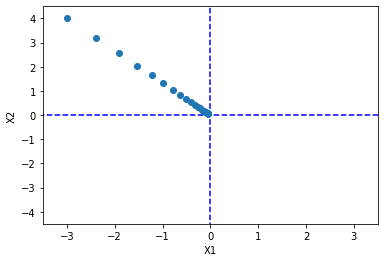
Pretty good , Effect grouping . It can be seen from the image , The farther the coordinate is from the minimum , The greater the gradient , Therefore, the larger the value of a single step update ; As it approaches the minimum , The gradient becomes smaller , So although the step size remains the same , But the value of a single update will also become smaller .
So how to determine the value of learning rate ? The value of learning rate is 0 To 1 Between , It's too small , You can't even grow up . For example, we walk , Take big steps , There are also small ones . The big drawback is that it's easy to walk away at once , And it's easy to get stuck , Then I couldn't get to the smallest place . The learning rate is too small , Take too many steps , Very slow . So when the number of iterations is not enough , You haven't even reached your destination .
For example, I modify the learning rate to 0.05, Look at the results :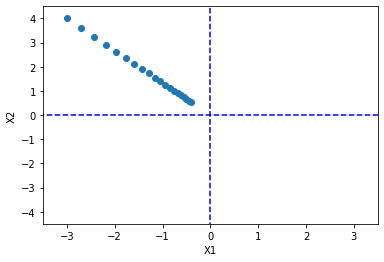
You can see , This iteration is over before it reaches the minimum , But you can just increase the number of iterations .
Then modify the learning rate to 0.3: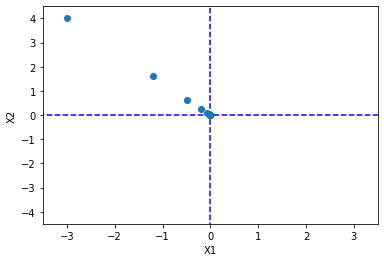
You can see , Take a big step ahead , All at once . The latter is due to the change of gradient value , So even if the learning rate is still very high , But I didn't cross my head . But what does not appear here does not mean that there will be no over crossing problem when the neural network algorithm is updated . Let's talk about this later .
边栏推荐
- Conversion of numerical amount into capital figures in PHP
- 【MobileNet V3】《Searching for MobileNetV3》
- ABM论文翻译
- Solve the problem of latex picture floating
- CONDA common commands
- Timeout docking video generation
- TimeCLR: A self-supervised contrastive learning framework for univariate time series representation
- Network metering - transport layer
- MoCO ——Momentum Contrast for Unsupervised Visual Representation Learning
- Installation and use of image data crawling tool Image Downloader
猜你喜欢
![[binocular vision] binocular stereo matching](/img/93/2e916038f0e7d0c7b3bf64f8dc1b4e.png)
[binocular vision] binocular stereo matching

How do vision transformer work?【论文解读】

Drawing mechanism of view (I)
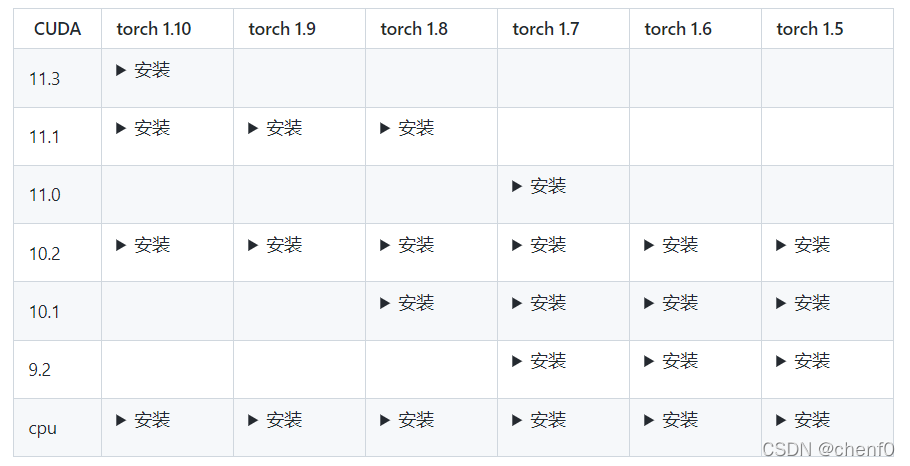
MMDetection安装问题

Timeout docking video generation

Proof and understanding of pointnet principle
![How do vision transformer work? [interpretation of the paper]](/img/93/5f967b876fbd63c07b8cfe8dd17263.png)
How do vision transformer work? [interpretation of the paper]

What if a new window always pops up when opening a folder on a laptop
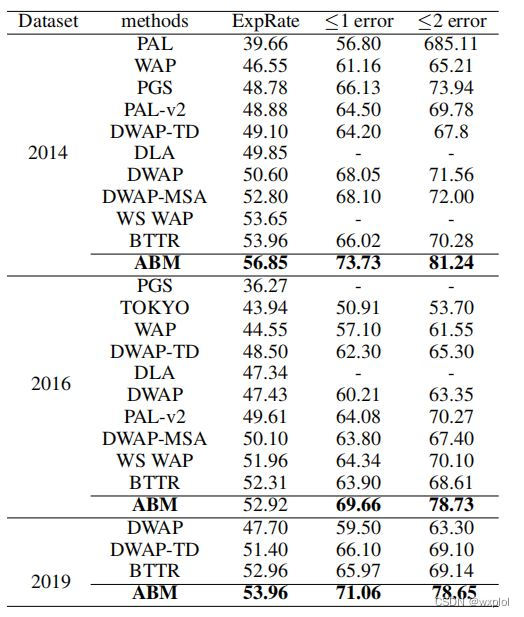
ABM thesis translation
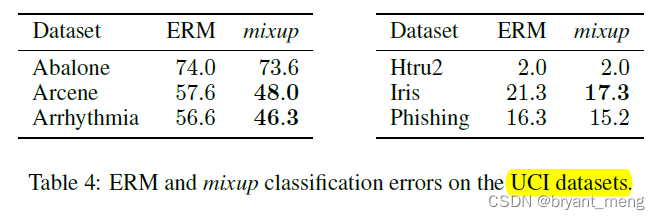
【Mixup】《Mixup:Beyond Empirical Risk Minimization》
随机推荐
Use Baidu network disk to upload data to the server
One book 1078: sum of fractional sequences
Faster-ILOD、maskrcnn_ Benchmark installation process and problems encountered
Mmdetection trains its own data set -- export coco format of cvat annotation file and related operations
Comparison of chat Chinese corpus (attach links to various resources)
Yolov3 trains its own data set (mmdetection)
ModuleNotFoundError: No module named ‘pytest‘
【Cascade FPD】《Deep Convolutional Network Cascade for Facial Point Detection》
Ppt skills
label propagation 标签传播
【Mixup】《Mixup:Beyond Empirical Risk Minimization》
Conversion of numerical amount into capital figures in PHP
CONDA common commands
C#与MySQL数据库连接
Drawing mechanism of view (3)
自然辩证辨析题整理
Timeout docking video generation
Handwritten call, apply, bind
Feature Engineering: summary of common feature transformation methods
【Hide-and-Seek】《Hide-and-Seek: A Data Augmentation Technique for Weakly-Supervised Localization xxx》